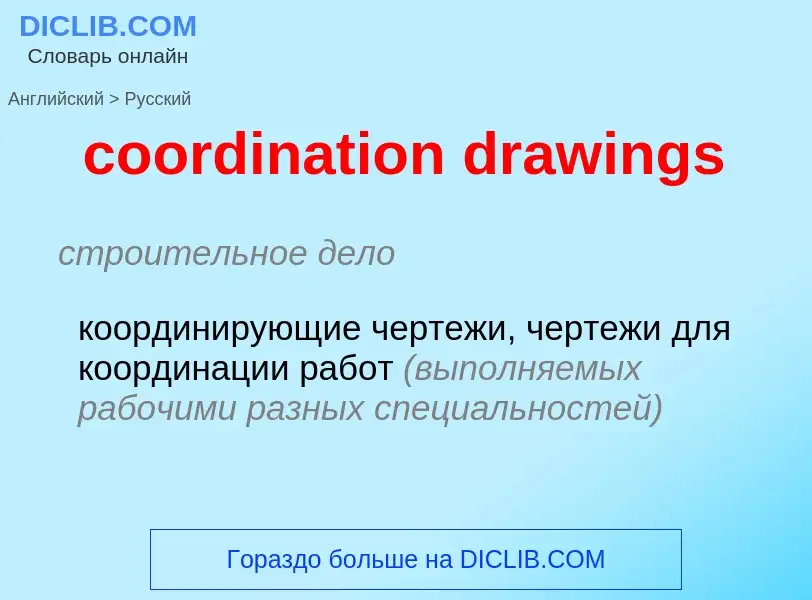Vertaling en analyse van woorden door kunstmatige intelligentie ChatGPT
Op deze pagina kunt u een gedetailleerde analyse krijgen van een woord of zin, geproduceerd met behulp van de beste kunstmatige intelligentietechnologie tot nu toe:
- hoe het woord wordt gebruikt
- gebruiksfrequentie
- het wordt vaker gebruikt in mondelinge of schriftelijke toespraken
- opties voor woordvertaling
- Gebruiksvoorbeelden (meerdere zinnen met vertaling)
- etymologie
coordination drawings - vertaling naar russisch
строительное дело
координирующие чертежи, чертежи для координации работ (выполняемых рабочими разных специальностей)
медицина
моторная координация
Wikipedia

Embryo drawing is the illustration of embryos in their developmental sequence. In plants and animals, an embryo develops from a zygote, the single cell that results when an egg and sperm fuse during fertilization. In animals, the zygote divides repeatedly to form a ball of cells, which then forms a set of tissue layers that migrate and fold to form an early embryo. Images of embryos provide a means of comparing embryos of different ages, and species. To this day, embryo drawings are made in undergraduate developmental biology lessons.
Comparing different embryonic stages of different animals is a tool that can be used to infer relationships between species, and thus biological evolution. This has been a source of quite some controversy, both now and in the past. Ernst Haeckel at the University of Basel pioneered in this field. By comparing different embryonic stages of different vertebrate species, he formulated the recapitulation theory. This theory states that an animal's embryonic development follows exactly the same sequence as the sequence of its evolutionary ancestors. Haeckel's work and the ensuing controversy linked the fields of developmental biology and comparative anatomy into comparative embryology. From a more modern perspective, Haeckel's drawings were the beginnings of the field of evolutionary developmental biology (evo-devo).
The study of comparative embryology aims to prove or disprove that vertebrate embryos of different classes (e.g. mammals vs. fish) follow a similar developmental path due to their common ancestry. Such developing vertebrates have similar genes, which determine the basic body plan. However, further development allows for the distinguishing of distinct characteristics as adults.


